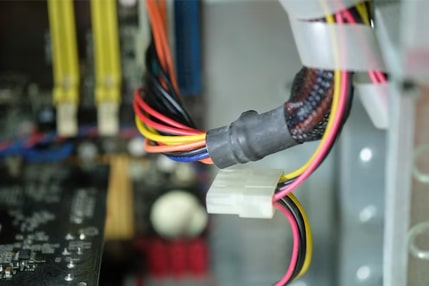Measurement of Sheath Thickness
Tiêu đề: Measurement of Sheath Thickness
The measurement of sheath thickness in cables is conducted in accordance with the requirements of the standard BS EN 60811-202. This standard covers the method for measurement of sheath thickness for testing non-metallic materials of all cable types referenced in standards for cable construction and for cable
materials.
The equipment used to measure the outer sheathing of the cable may be one of the following; a measuring microscope or profile projector of at least 10 x magnification or an optical digital image analyser. The two types of equipment must be capable of providing a reading accuracy of 0.01mm and an estimated
reading to three decimal places when measuring insulation thickness with a specified thickness less than 0.5mm.
Cable sheaths may be applied over longitudinally regular surfaces, over longitudinally irregular surfaces or over corrugated metallic sheaths. For sheaths applied over longitudinally irregular surfaces like corrugated metallic sheaths, a micrometre having a ball nose radius of 1mm with an accuracy of 0.01mm may be
used.
The preparation of the cable sample for testing is dependent on the sheath application:
Cable sheaths applied over longitudinally regular surfaces: After all materials, if any, inside and outside the sheath have been removed, a thin slice is then taken which is perpendicular to the longitudinal axis of the cable. This is then tested.
Sheathing material applied over longitudinally irregular surfaces: A short piece of sheath is cut perpendicular to the longitudinal axis of the cable, which includes at least one complete pitch of helix formed from the underlying tape. When using a ball nose micrometre, the sample may be left whole, when using a measuring microscope or profile projector, the testing sample piece is prepared by cutting six thin
longitudinal slices parallel to the cable axis.
Outer sheaths applied over corrugated metallic sheaths: A sample of cable is taken of sufficient length to include two peaks and two troughs. A reference line is drawn on the outer surface, parallel to the axis of the cable. The position of the minimum thickness is determined on an annular ring taken from the end of the sample, a strip is then cut from the minimum point parallel to the axis of the cable by using the reference line to locate this position.
The measuring procedure for dimensional testing of sheath thickness is in accordance with the sheath application and the results are evaluated as specified in the relevant cable standard, generally against a required mean value and minimum value.
The measurement of sheath thickness is necessary to verify compliance with specifications to meet the mechanical stresses imposed on the cable and ensure
safe and reliable performance of the cable during its service life.
Bài viết liên quan
Let’s start with some individual definitions: Wire: A wire is a single conductor made up of an electrically conductive material like aluminum or copper. This conductor can be made up of one strand of material or a group of strands and may be left bare or surrounded by a color-coded sheath. Regardless of the number of […]
Selecting the right cable involves a systematic decision-making process to ensure the specific requirements of the intended application are met. Clearly define the project or product’s cabling requirements such as: voltages, currents, signal type, environmental conditions, signal integrity, signal frequencies, RFI susceptibility and emissions, and any relevant regulations or standards. Based on the close […]
The measurement of insulation thickness is conducted in accordance with the requirements of the standard BS EN 60811-201. This standard covers the method for measurement of insulation thickness for testing non-metallic materials of all cable types referenced in standards for cable construction and cable materials. The measurements may be taken using a measuring microscope […]




